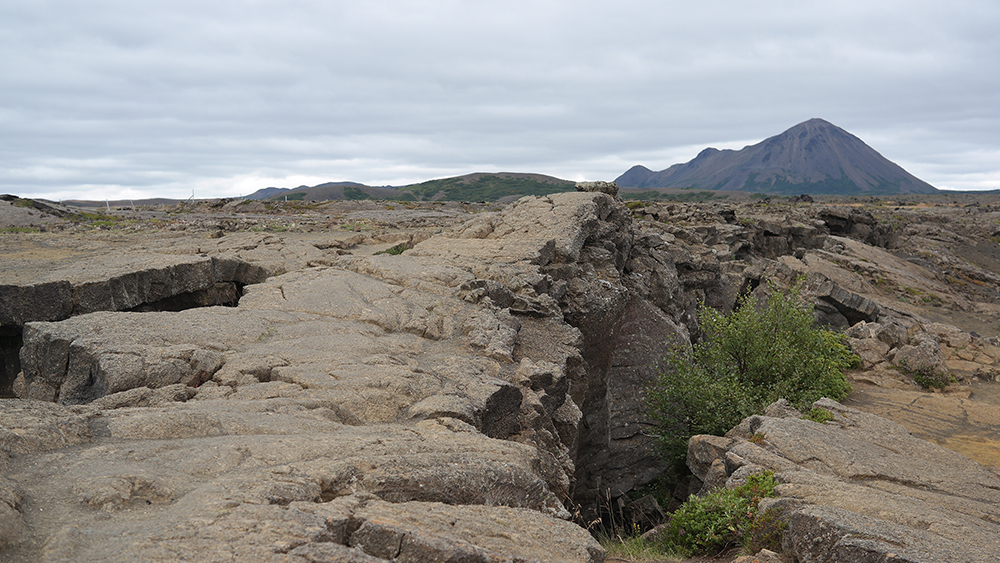The theory of plate tectonics recently turned fifty. Contrary to the claims of its critics, the theory of plate tectonics is derived from empirical data collected over many decades by geologists and geophysicists.1
In the early 20th century, Alfred Wegener studied the shapes of the continents, matched fossils and mountain ranges across vast oceans, and suggested that the continents had drifted apart. At the time, the geological community ridiculed and ignored his ideas. It was not until the 1960s, after immense quantities of oceanographic data were collected, and the publication of Harry Hess’ hypothesis of seafloor spreading, that these ideas slowly became accepted. They were termed plate tectonics. Today, geologists can measure the post-Flood movement of the plates using satellite data, verifying there is still ongoing slow, residual plate motion.
Nearly 50 years after Wegener first proposed the concept of continental drift, the secular community reluctantly acknowledged plate motion because they were overwhelmed with empirical data. Today, it has been another 50 years since plate tectonics was accepted by the geologic community. Yet some mysteries still remain unresolved.
Keith James, a geologist from the Institute of Geography and Earth Sciences of Aberystwyth University in Wales, UK, reminds us that geoscientists still do not understand the origin of continents. Continental crust is supposed to be produced “by complex partial melting of sediments, the [subducted] slab, the mantle or the mantle wedge (or combinations of these) in ‘subduction factories.’”2 However, geoscientists readily admit the continents are too large for this simple explanation.
Secular geologists claim most of the continents are quite old, much older than the ocean crust.3 They believe that the bulk of the continents originated nearly all at once, early in Earth’s history, in a supposed time called the Archean Eon—over two and a half billion years ago.4
In other words, too much continental crust formed too quickly for plate tectonics to be true within the secular narrative of Earth’s history.
James believes the method of teaching plate tectonics may be to blame. He asserts, “Published PT [plate tectonic] teaching is complacent. It should adapt to emerging data, include multiple working hypotheses and enable students to think and choose.”2 But it will take more than changing the teaching methods to solve this conundrum.
The best answer to the origin of the continents can only be found in the pages of the Bible. ![]()
The best answer to the origin of the continents can only be found in the pages of the Bible. Genesis 1:9 says, “Then God said, ‘Let the waters under the heavens be gathered together into one place, and let the dry land appear’; and it was so.” God spoke the supercontinent of the pre-Flood world into existence all at once on Day 3 of the Creation Week.5
James also questions why some discoveries get side-stepped by most secular scientists, such as the “numerous samples of continental material dredged from ocean floors, some with trilobites and graptolites [marine fossils].”2 He also says, “In the South Atlantic, granite [continental rock] was in 2013 discovered on the northwest-to-southeast Rio Grande Ridge (outer edge of South America’s magnetic extension).”2 He notes that standard plate tectonic theory cannot explain the presence of these continental rocks and fossils found so deep in the ocean basins.
However, most creation geologists accept a more rapid version of plate tectonics, believing plate motion was an integral part of the global Flood.1 Tsunami-like waves generated during the Flood from rapid subduction and catastrophic plate motion of meters per second can transport continental materials and shallow-water fossils into the deep ocean basins.1 Mixing of land and sea environments is a common phenomenon in the global rock record.6 Even dinosaurs have been washed out to sea.6
Most creation geologists accept a more rapid version of plate tectonics, believing plate motion was an integral part of the global Flood. ![]()
In the last 50 years, much empirical evidence has been found to support plate motion and the reconstruction of Wegener’s supercontinent. But the origins of the continents and the mixing of environments remain puzzling to those who blindly believe there never was a global Flood. Only a biblical worldview provides us with the clear answers.
References
- Clarey, T. 2016. Embracing Catastrophic Plate Tectonics. Acts & Facts. 45 (5).
- James, K. 2018. Not Written in Stone: Plate tectonics at 50. AAPG Explorer. 39(2):18-23.
- Hecth, J. 2015. Rise of the upper crust. New Scientist. 226 (3017): 36-39.
- Gazel, E. et al. 2015. Continental crust generated in oceanic arcs. Nature Geoscience. 8 (4): 321-327.
- Clarey, T. 2015. Still Searching for Geology's Holy Grail. Creation Science Update. Posted in ICR.org May 11, 2015.
- Clarey, T. 2015. Dinosaurs in Marine Sediments: A Worldwide Phenomenon. Acts & Facts. 44 (6).
*Dr. Timothy Clarey is Research Associate at ICR and earned a Ph.D. in geology from Western Michigan University and an M.S. from the University of Wyoming.






















